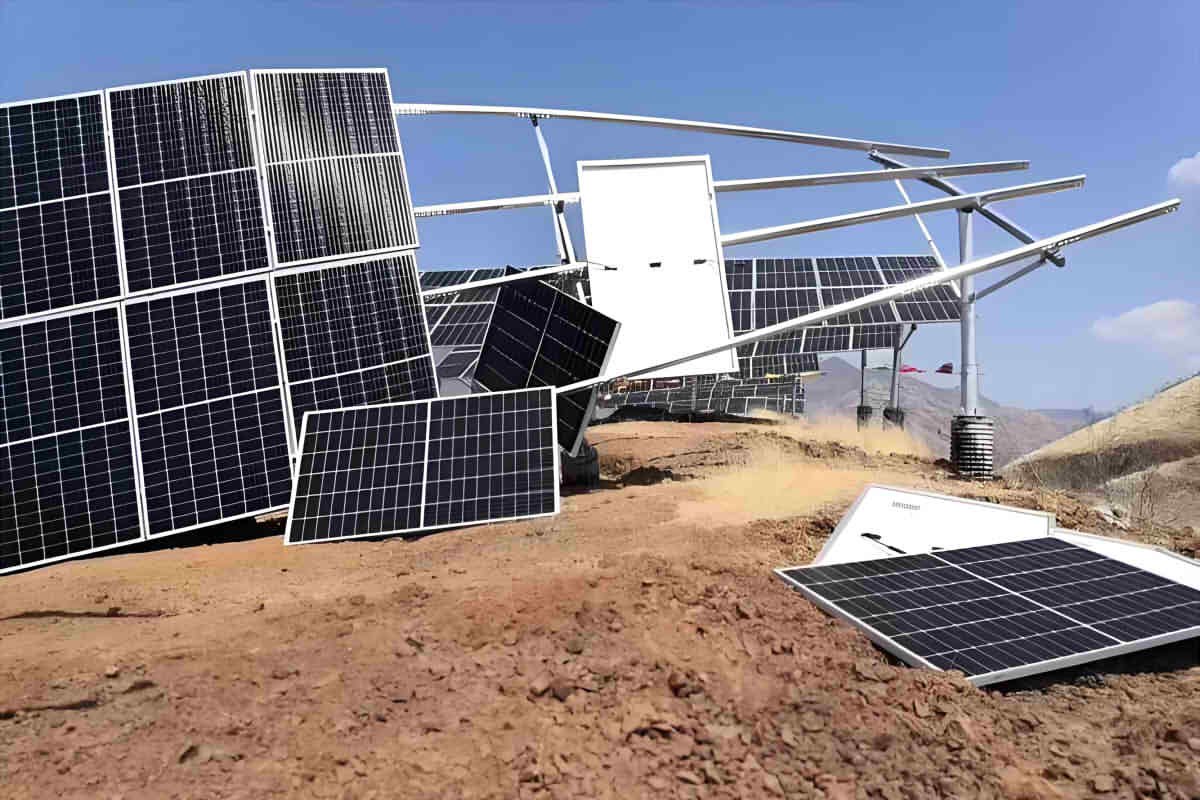В сегодняшнем стремлении к чистой энергии, Наружная фотоэлектрическая энергия, Как устойчивое энергетическое решение, привлекла широкое внимание и применение. Однако, Текущие продукты фотоэлектрической системы стандартизируются как простые устройства производства электроэнергии, и они сталкиваются с многочисленными серьезными проблемами, когда сталкиваются с экстремальными погодными условиями. Эти проблемы вызывают беспокойство и трудности для фотоэлектрических пользователей, Инвесторы в фотоэлектрические электростанции, и менеджеры.
Оглавление
- Проблемы существующих фотоэлектрических систем в экстремальную погоду
- Влияние сильных ветров на фотоэлектрические системы
- Заключение
Проблемы существующих фотоэлектрических систем в экстремальную погоду
Сильные ветры
Во время сильных ветров, фотоэлектрические системы терпят огромное давление ветра. Фотоэлектрические модули могут быть сдудены или повреждены, и монтажные структуры могут деформироваться или разрушаться из -за их неспособности противостоять ветру. Это не только приводит к прямым финансовым потерям, но и представляет угрозу для окружающей среды и безопасности людей.
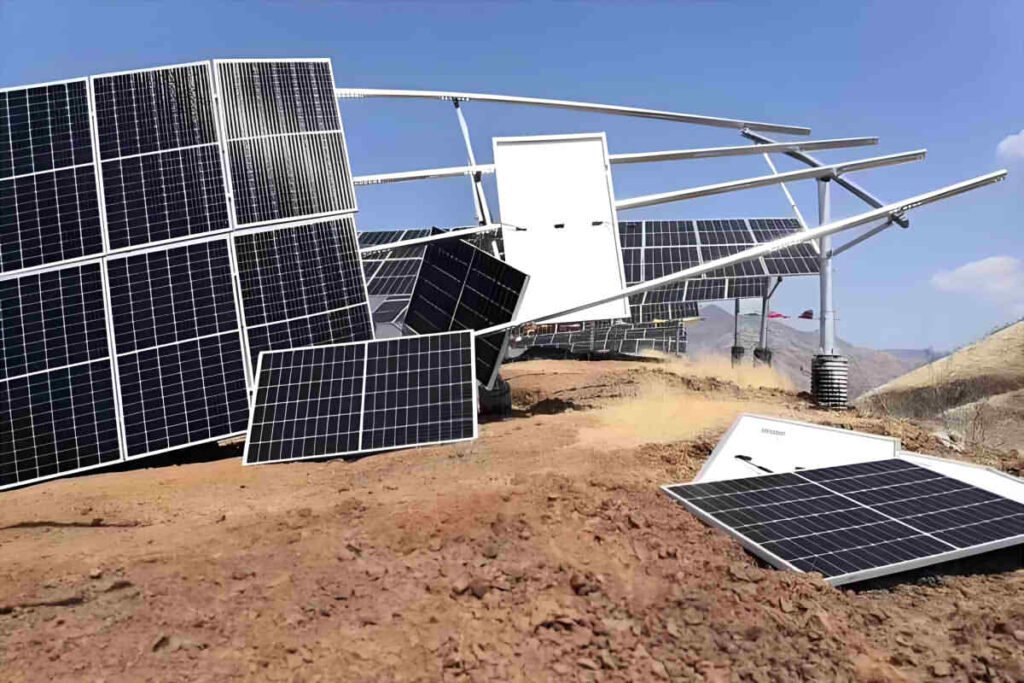
Хайл воздействие
Град очень эффективен и представляет значительную угрозу для фотоэлектрических модулей. Влияние града может вызвать трещины или поломки на поверхности модулей, Или даже полностью разрушить их. Эти убытки не только сразу же влияют на выработку электроэнергии, но также могут привести к коротким замыканиям во внутренней схеме модуля, потенциально приводят к пожарам или другим более серьезным последствиям. Кроме того, Замена поврежденных модулей требует значительного времени и стоимости.
Высокая температура
В жаркие летние месяцы, часто встречаются высокие температуры. Чрезмерное тепло может повлиять на производительность фотоэлектрических модулей, приводя к снижению эффективности выработки электроэнергии. Более того, Длительное воздействие высоких температур может ускорить старение модулей и других PV аксессуары, такие как кабели, сокращение их продолжительности жизни. В высокотемпературной среде, рассеяние тепла системы становится критической проблемой, и плохое рассеяние тепла может еще больше повлиять на стабильность и надежность системы.
Тяжелое накопление снега
В холодных зимах, Тяжелый снегопад может нанести значительное бремя на фотоэлектрические системы. Снег накапливается на поверхности модулей блокирует солнечный свет, радикально уменьшая выработку электроэнергии. Более того, Сосульки, образованные из таяния снега, могут повредить как модули, так и монтажные структуры. Удаление снега также требует значительного труда и ресурсов, Увеличение затрат на техническое обслуживание.
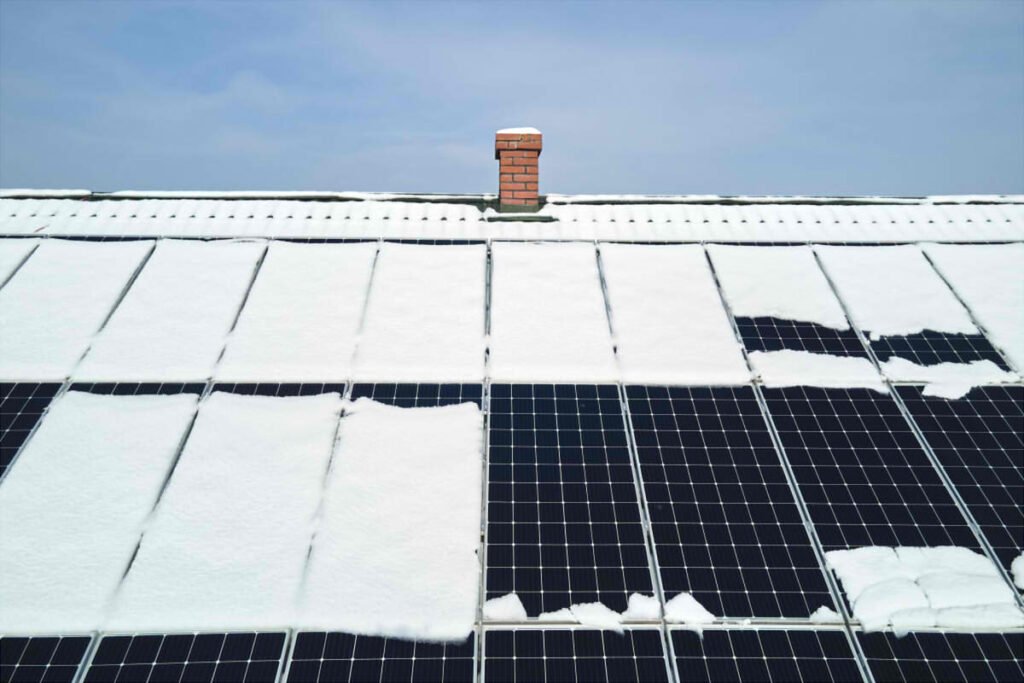
Влияние сильных ветров на фотоэлектрические системы
В последние месяцы, Ураганы Милтон и Кирк нанесли значительный ущерб частям США. и несколько европейских стран, с множеством фотоэлектрических электростанций сильно повлиял на. В последние годы, Появление сильных ветров и других экстремальных погодных явлений нанесло тяжелый удар по фотоэлектрическим электростанциям, раскрытие многочисленных проблем.
Анализ повреждений и потерь строительных фотоэлектрических электростанций
Сильные ветры и тайфуны сильно повреждены фотоэлектрическими системами на крыше. Разрушение строительных фотоэлектрических систем приводит к прямым финансовым потерям, и восстановление фотоэлектрических систем на крыше требует существенного времени и денег. Установка фотоэлектрических модулей требует значительных человеческих, материал, и временные ресурсы, что становится тяжелым бременем для операторов электростанций. Например, в подобных экстремальных погодных явлениях, Многие фотоэлектрические системы на крыше должны закупать новые модули и проходить установку и отладочную работу, процесс, который может занять недели или даже месяцы, с прерыванием производства электроэнергии и экономических потерями, понесенных в течение этого периода.
Кроме того, Текущие проекты и планы реализации явно не могут эффективно противостоять местным климатическим условиям. Стратегии должны быть скорректированы для борьбы с опасной погодой, с новым, Выбранные надежные решения. Реальность такова, что большинство фотоэлектрических компаний’ Продукты и решения на рынке очень однородные, Выбор нового надежное солнечное решение главный приоритет для лиц, принимающих решения,.
Анализ неспособности существующих фотоэлектрических систем на крыше справляться с сильными ветрами
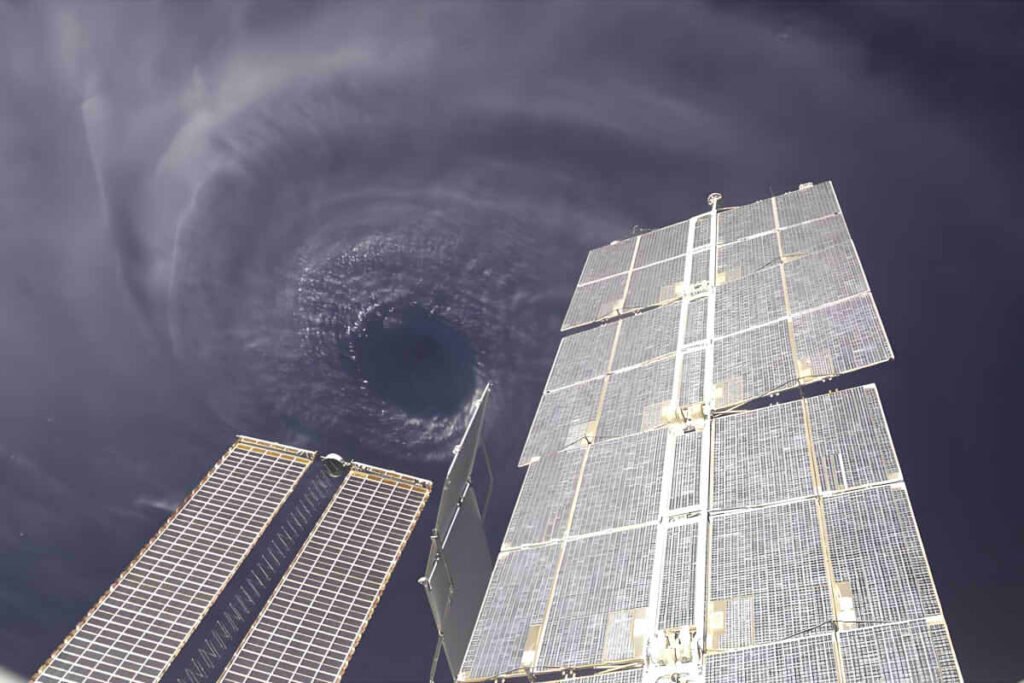
Ограниченная несущая грузоподъемность
Многие крыши не были изначально разработаны для размещения фотоэлектрических систем, Таким образом, их грузоподъемность ограничена. Например, Некоторые старые жилые или легкие коммерческие здания имеют относительно слабые сооружения крыши. Когда ударяются сильные ветры, Крыша должна не только нести дополнительный вес фотоэлектрической системы, но и противостоять силам ветра, что может привести к деформации крыши или даже повреждению. Это ставит под угрозу стабильность фотоэлектрической системы, а также может представлять угрозу безопасности всего здания.
Плохая совместимость между конструкциями крыши и фотоэлектрическими системами
Различные конструкции крыши оказывают различные воздействия на установку и сопротивление ветре фотоэлектрических систем. Изогнутые крыши или крыши нерегулярной формы могут не обеспечить стабильную поверхность для фотоэлектрических систем. При установке фотоэлектрические модули, крепления и кабели, Достижение идеального макета и правильно их обеспечение может быть сложной задачей, Сделать систему более восприимчивой к неровным ветровым силам при сильных ветрах и увеличении риска повреждения. Установка с определенным углом наклона значительно увеличивает коэффициент формы крыши и ветровую нагрузку, Делать его более подверженным повреждениям от сильных ветров.
Нестабильные установки
Методы фиксации, используемые для фотоэлектрических систем на крыше, часто имеют слабые точки. Общие методы, например, использование бетонных балластных блоков, чтобы закрепить крепление к крыше, может не оказать достаточного сопротивления ветра. Для легких крыш (такие как цветные стальные крыши), Использование клипов для защиты может не обеспечить достаточного напряжения, чтобы противостоять сильным ветрам, Сделать фотоэлектрическую систему, подверженной полностью отмену.
Монтажная структура имеет решающее значение для поддержки фотоэлектрических модулей, Но некоторые текущие фотоэлектрические крепления на крыше имеют недостатки дизайна. Определенные крепления структурно просты и не имеют достаточной силы и стабильности. Например, Некоторые крепления имеют относительно тонкие структуры рамки, которые легко сгибаются или деформируются под сильным ветром. Кроме того, Точки соединения между креплениями часто бывают слабыми точками стресса, которые могут сломаться под воздействием ветра, призывая всю фотоэлектрическую систему потерять поддержку и быть поврежденным.
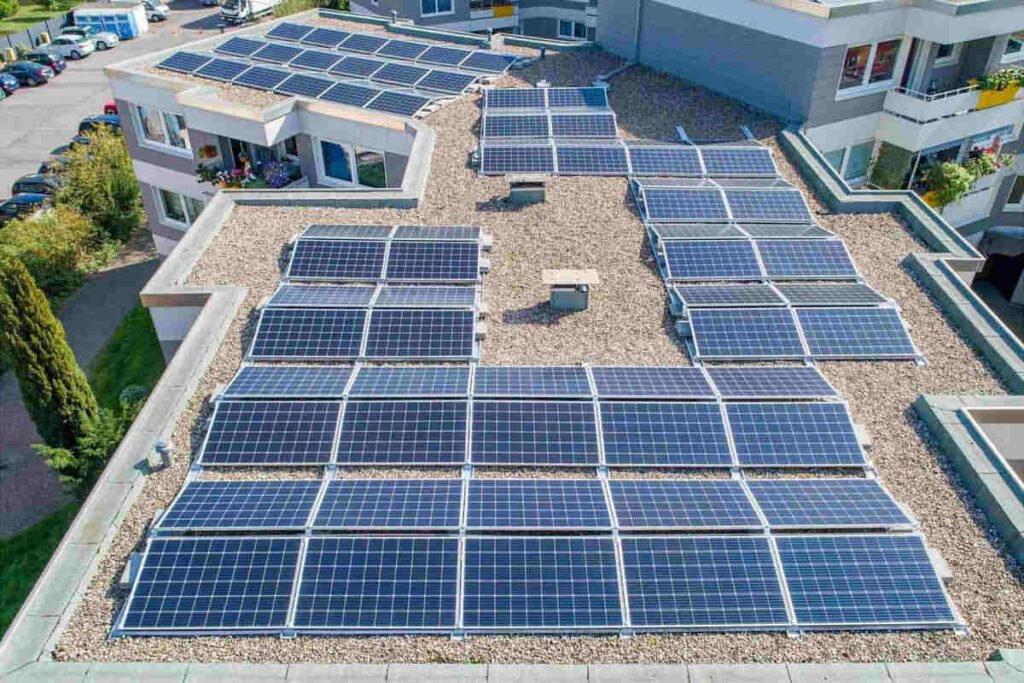
Область модуля и сопротивление ветра
Фотоэлектрические модули имеют большие площади поверхности, и в последние годы, Размеры модулей увеличились. В сильных ветрах, Эти большие площади поверхности создают значительную сопротивление ветра. Большие фотоэлектрические панельные массивы на крышах действуют как «Парусы,”Тонкие существенные ветровые нагрузки во время сильных порывов.
Прочность материала фотоэлектрических модулей
Кадры и внутренние структуры фотоэлектрических модулей имеют ограниченную прочность. Под повторным воздействием сильных ветров, Кадры могут деформироваться, и внутренние структуры могут сломаться. Например, Модули с рамами алюминиевого сплава могут не иметь возможности противостоять стрессу от длительного воздействия ветра, заставляя рамку сгибаться и влиять на стеснение соединения между модулем и креплением. Эта нестабильность может поставить под угрозу безопасное позиционирование модуля на крыше.
Заключение
Из приведенного выше анализа, Понятно, что неспособность существующих фотоэлектрических систем противостоять сильным ветрам обусловлена множеством факторов, включая структурные ограничения крыш и методов установки, а также неотъемлемые характеристики фотоэлектрических модулей. Мы с нетерпением ждем новых PV продукты и технологические решения, которые могут повысить устойчивость стихийных бедствий фотоэлектрических систем, смягчение рисков и уменьшение потенциальных потерь.

